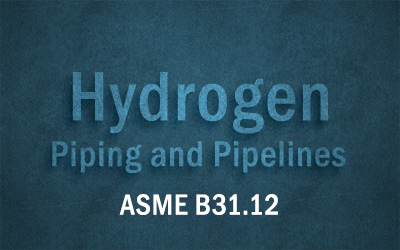ROHR2 for optimized Pipe Stress Analysis
What you'll learn
Learning Objectives 🎯
Upon completion of this course, participants will be able to:
Apply EN 13480-3 Criteria: Successfully interpret and apply the specific formulae and safety margins for calculating Sustained and Thermal Expansion Stresses under EN 13480.
Model EN Components: Accurately model all standard and specialized piping components (including EN-specified materials and fittings) within the ROHR2 environment.
Define Load Envelopes: Structure and combine static loads (pressure, temperature, weight) strictly according to the EN 13480 load case methodology.
Resolve Non-Linearities: Implement and analyze the effects of friction, gaps, and limit stops in the model, understanding their impact on overall system flexibility.
Validate Equipment Integrity: Implement nozzle load checks and verify external forces against allowable limits prescribed by relevant EN/DIN equipment standards.
Generate Auditable Reports: Produce detailed, customized ROHR2 output reports that meet all documentation requirements for EN 13480 compliance and third-party verification.
Design of Bolted Flange Joints
What you'll learn
You Will Learn To
Develop an awareness of flange types and the ASME codes and standards applicable for bolted flange joint design
Enhance your knowledge for designing and analyzing bolted flange joints
Explain how the flange design interacts with bolts and gaskets to achieve a leak tight joint
Identify the parameters that can affect flange sealing along with methods to troubleshoot and remediate flange leakage
B31.8 Gas Transmission & Distribution Piping System
What you'll learn
Explain the causes and modes of pipeline failure
Describe the considerations for material specifications, pipe manufacturing, and pipe joining
Estimate pipeline stresses from external loading
Explain how to evaluate pipeline defects
Identify pipeline repair techniques
Identify the elements of pipeline integrity
Explain how code requirements address these issues
Explain the differences between B31.8 and US DOT gas pipeline regulations
Intermediate
ASME BPV Code, Section VIII, Division 2: Design & Fabrication of Pressure Vessels
$600.00
ASME BPV Code, Section VIII, Division 2: Design & Fabrication of Pressure Vessels
What you'll learn
Explain how the requirements of Divisions 1 and 2 of Section VIII compare
Explain the theories of failure and design margins of various codes
Identify the general requirements of the new Division 2
Describe design rules and stress analysis methods
Explain fatigue analysis
Identify materials and fabrication requirements
Identify NDE requirements, pressure testing, and pressure relief requirements
Fundamentals of Pumps and Their Selection for Optimum System Performance
What you'll learn
Calculate the pressure loss in a pipeline due to friction for circular and non circular ducts
Determine the pipe diameter that minimizes first plus operating costs of a piping system
Generate a system curve for a pipeline
Identify the testing methods used to obtain a performance map for a centrifugal pump
Employ the system curve to select an efficient centrifugal pump
Explain how to predict when cavitation will occur and identify the necessary steps to avoid it
Explain how to use dimensional analysis to correlate experimental data for a pump
Explain how the specific speed is determined
Apply affinity laws to predict off-design behavior for a pump
Identify types of positive displacement pumps
Examine common methods of measuring flow rate in a pipeline
Identify the types of meters available for flow rate measurement
Generate calibration curves for venturi, orifice, and elbow meters
Describe the different types of valves that are commercially available
Explain how to select the correct valve for a piping system
Identify and avoid problems by selecting the correct valve
Explain how to install, operate and maintain valves
Describe the process of diagnosing and troubleshooting valve problems
B31.1 Power Piping
What you'll learn
Identify the difference between “Design by Rule” and “Design by Analysis” codes.
Discover the principal failure modes of piping components and where to look for them.
Recognize the difference between pressure component design and structural design.
Investigate the importance of piping flexibility.
Discuss how to develop stress intensification factors.
Recognize how to qualify nonstandard fittings and joints.
Identify materials selection and limitations, fabrication rules and their bases
Explain welding qualification requirements, inspection, examination, and testing requirements
Identify the Code requirements for power piping maintenance
B31.3 Process Piping
What you'll learn
Identify the responsibilities of personnel involved in the design, fabrication, assembly, erection, examination, inspection, and testing of process piping
Describe the scope and technical requirements of the ASME B31.3 Code
Apply and implement the quality requirements that are defined in the ASME B31.3 Code
Pipe Stress analysis and supporting systems for piping designers
What you'll learn
Eliminate Design Iterations: Proactively design layouts that meet mechanical requirements, directly reducing costly communication loops and eliminating re-work cycles between the Piping Design and Stress Analysis teams.
Translate Code to CAD: Gain the essential knowledge of stress analysis criteria (e.g., thermal flexibility, support span limits) and learn to implement these ASME B31 code rules directly within your 3D modeling environment.
Master Load Vector Generation: Understand precisely how your layout decisions (routing, branch connections, component weight) directly translate into critical load vectors that determine the compliance of the entire system.
Optimize Support System Placement: Select and place piping support systems not just for weight, but to effectively control displacement and manage moment loads, making the system inherently mechanically sound from the initial draft.
Accelerate Deliverable Approval: Structure and prepare piping deliverables (Isometrics, Plan Views) to proactively address the stress engineer's needs, leading to faster review cycles and accelerated project turnover.
Validate Constructability & Compliance: Achieve true engineering synergy by ensuring your designs are simultaneously constructable, cost-efficient, and fully compliant with ASME flexibility and sustained stress limits.
ASME B31.12 Hydrogen Piping and Pipelines
What you'll learn
Hydrogen Technologies and Market Players
Global Policies
Describe the scope of B31.12
Explain the design requirements of B31.12
Identify materials requirements
Explain B31.12 requirements for fabrication, assembly, and erection
Explain the B31.12 requirements for inspection, examination, and testing
Bolted Joints and Gasket Behavior
What you'll learn
Explain how the bolted joint functions as a mechanical system that relies on the simultaneous interaction of the three primary components to successfully seal the connection
Assess the mechanical stress and strain of a bolt and explain the challenges that one encounters when specifying an optimum bolt load
Evaluate the total state of stress in bolts and how this effects the selection of a given bolt type and grade
Describe the effects of in-service conditions and how they reduce or increase bolt load
Describe the concept of leak tightness as a predictable value of gasket stress and how to use leak tightness as the basis of specifying bolt loads
Identify conditions that create bolt failure
Use ASME PCC-1 Guidelines for compliance to successful sealing of bolted, gasketed connections
Discern how to use either stress or strain to select bolt load
Evaluate the various methods of attaining bolt load.
Pipe Stress Engineering-Academic foundation
What you'll learn
Differentiate between properties of various engineering materials.
Apply fundamental principles of stress, strain, and material failure theories.
Perform stress analysis on different structural components.
Utilize Finite Element Analysis (FEA) software for complex problems.
Analyze thermal, static, and dynamic loads.
Develop a strong theoretical foundation for specialized fields like pipe stress analysis.













